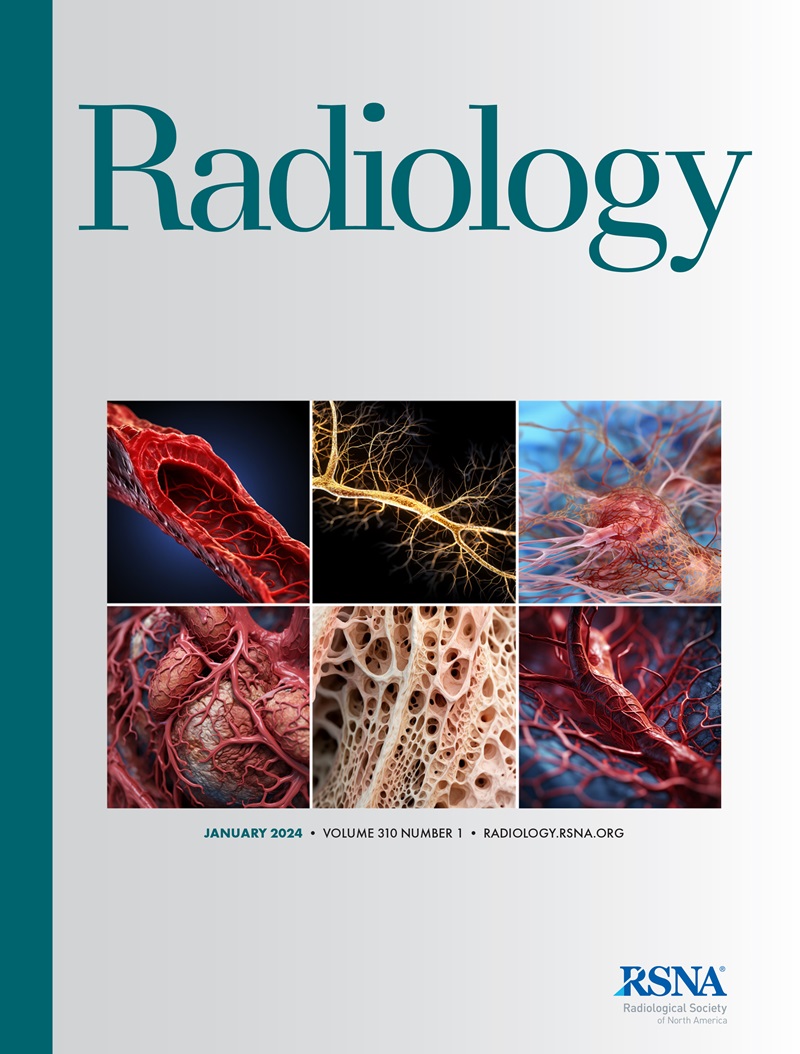求助PDF
{"title":"双能量 CT 对下肢骨应力损伤的诊断准确性。","authors":"Giovanni Foti, Lorenza Sanfilippo, Chiara Longo, Eugenio Oliboni, Nicoletta De Santis, Venanzio Iacono, Gerardo Serra, Massimo Guerriero, Roberto Filippini","doi":"10.1148/radiol.232415","DOIUrl":null,"url":null,"abstract":"<p><p>Background Because of its ability to help assess the presence of subtle morphologic changes in bone and bone marrow edema, dual-energy CT (DECT) could be an alternative to MRI in the diagnosis of bone stress injury that includes a stress fracture (SF) and stress reaction (SR). Purpose To determine the diagnostic accuracy of DECT in identifying bone stress injury of the lower limb using MRI as the reference standard. Materials and Methods This prospective study, conducted between June 2021 and January 2024, included consecutive patients clinically suspected of having stress injury (SF or SR) of the lower limb (leg, ankle, or foot). Imaging diagnosis was based on the absence or presence of cortical or periosteal changes, bone marrow edema, or a fracture line. The diagnostic performance of four blinded independent readers was determined for the entire cohort and for the subset of participants without fracture lines. Sensitivity, specificity, and area under the receiver operating characteristic curve (AUC) were calculated. Interobserver agreement was evaluated with Kendall coefficient of concordance <i>(W)</i>. Results A total of 184 patients (mean age, 58 years ± 17 [SD]; 97 male) were enrolled. At MRI, 107 of 184 participants (58%) had positive diagnoses, including 70 with SF and 37 with SR. The mean overall sensitivity and specificity were 91% (390 of 428; 95% CI: 0.85, 0.95) and 93% (287 of 308; 95% CI: 0.87, 0.97), respectively, with an AUC of 0.94 (95% CI: 0.91, 0.97). Among patients without fracture lines (<i>n</i> = 114), the mean overall sensitivity and specificity of DECT were 79% (117 of 148; 95% CI: 0.65, 0.88) and 93% (287 of 308; 95% CI: 0.87, 0.97), respectively, with an AUC of 0.87 (95% CI: 0.81, 0.94). The interobserver agreement was very good for diagnosis of SF and SR combined (Kendall <i>W</i> = 0.90) and SR alone (Kendall <i>W</i> = 0.84). Conclusion DECT helped to accurately diagnose bone stress injury of the lower limb by identifying fracture lines and osseous stress reactions. © RSNA, 2024 <i>Supplemental material is available for this article.</i> See also the editorial by Breighner in this issue.</p>","PeriodicalId":20896,"journal":{"name":"Radiology","volume":"313 2","pages":"e232415"},"PeriodicalIF":12.1000,"publicationDate":"2024-11-01","publicationTypes":"Journal Article","fieldsOfStudy":null,"isOpenAccess":false,"openAccessPdf":"","citationCount":"0","resultStr":"{\"title\":\"Diagnostic Accuracy of Dual-Energy CT for Bone Stress Injury of the Lower Limb.\",\"authors\":\"Giovanni Foti, Lorenza Sanfilippo, Chiara Longo, Eugenio Oliboni, Nicoletta De Santis, Venanzio Iacono, Gerardo Serra, Massimo Guerriero, Roberto Filippini\",\"doi\":\"10.1148/radiol.232415\",\"DOIUrl\":null,\"url\":null,\"abstract\":\"<p><p>Background Because of its ability to help assess the presence of subtle morphologic changes in bone and bone marrow edema, dual-energy CT (DECT) could be an alternative to MRI in the diagnosis of bone stress injury that includes a stress fracture (SF) and stress reaction (SR). Purpose To determine the diagnostic accuracy of DECT in identifying bone stress injury of the lower limb using MRI as the reference standard. Materials and Methods This prospective study, conducted between June 2021 and January 2024, included consecutive patients clinically suspected of having stress injury (SF or SR) of the lower limb (leg, ankle, or foot). Imaging diagnosis was based on the absence or presence of cortical or periosteal changes, bone marrow edema, or a fracture line. The diagnostic performance of four blinded independent readers was determined for the entire cohort and for the subset of participants without fracture lines. Sensitivity, specificity, and area under the receiver operating characteristic curve (AUC) were calculated. Interobserver agreement was evaluated with Kendall coefficient of concordance <i>(W)</i>. Results A total of 184 patients (mean age, 58 years ± 17 [SD]; 97 male) were enrolled. At MRI, 107 of 184 participants (58%) had positive diagnoses, including 70 with SF and 37 with SR. The mean overall sensitivity and specificity were 91% (390 of 428; 95% CI: 0.85, 0.95) and 93% (287 of 308; 95% CI: 0.87, 0.97), respectively, with an AUC of 0.94 (95% CI: 0.91, 0.97). Among patients without fracture lines (<i>n</i> = 114), the mean overall sensitivity and specificity of DECT were 79% (117 of 148; 95% CI: 0.65, 0.88) and 93% (287 of 308; 95% CI: 0.87, 0.97), respectively, with an AUC of 0.87 (95% CI: 0.81, 0.94). The interobserver agreement was very good for diagnosis of SF and SR combined (Kendall <i>W</i> = 0.90) and SR alone (Kendall <i>W</i> = 0.84). Conclusion DECT helped to accurately diagnose bone stress injury of the lower limb by identifying fracture lines and osseous stress reactions. © RSNA, 2024 <i>Supplemental material is available for this article.</i> See also the editorial by Breighner in this issue.</p>\",\"PeriodicalId\":20896,\"journal\":{\"name\":\"Radiology\",\"volume\":\"313 2\",\"pages\":\"e232415\"},\"PeriodicalIF\":12.1000,\"publicationDate\":\"2024-11-01\",\"publicationTypes\":\"Journal Article\",\"fieldsOfStudy\":null,\"isOpenAccess\":false,\"openAccessPdf\":\"\",\"citationCount\":\"0\",\"resultStr\":null,\"platform\":\"Semanticscholar\",\"paperid\":null,\"PeriodicalName\":\"Radiology\",\"FirstCategoryId\":\"3\",\"ListUrlMain\":\"https://doi.org/10.1148/radiol.232415\",\"RegionNum\":1,\"RegionCategory\":\"医学\",\"ArticlePicture\":[],\"TitleCN\":null,\"AbstractTextCN\":null,\"PMCID\":null,\"EPubDate\":\"\",\"PubModel\":\"\",\"JCR\":\"Q1\",\"JCRName\":\"RADIOLOGY, NUCLEAR MEDICINE & MEDICAL IMAGING\",\"Score\":null,\"Total\":0}","platform":"Semanticscholar","paperid":null,"PeriodicalName":"Radiology","FirstCategoryId":"3","ListUrlMain":"https://doi.org/10.1148/radiol.232415","RegionNum":1,"RegionCategory":"医学","ArticlePicture":[],"TitleCN":null,"AbstractTextCN":null,"PMCID":null,"EPubDate":"","PubModel":"","JCR":"Q1","JCRName":"RADIOLOGY, NUCLEAR MEDICINE & MEDICAL IMAGING","Score":null,"Total":0}
引用次数: 0
引用
批量引用


